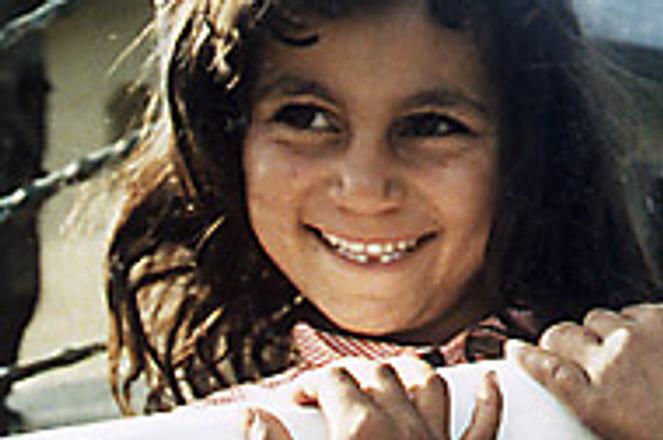Photos taken by and of children: a Roma child holding two large salami rolls.photo: Courtesy Bibiana
A United Nations declaration says that all children have the right to love, tolerance, education, name and nationality, social security and protection from racism and tolerance.
An April exhibition of photographs and art at Bratislava's Bibiana children's art house asks the frank question: Do these rights count for Roma children too?
"For every ten Slovaks there is one Roma in Slovakia," said exhibition creator Eva Čárska. "Roma children also need love, tolerance and protection of their basic needs. We [Slovaks] need to realise that these are our children too."
Whose Children are These? features photographs from Roma settlements in eastern Slovakia by photographer Jozef Schon. Neither sentimental nor critical, they show Roma children - playing in snow, retrieving water from a well, bathing in a river - seemingly oblivious to the surrounding poverty.
In Bibiana fashion, the exhibition's two rooms mingle photographs with paintings by and for children and cardboard art designed to withstand the wear of small, curious hands. A video of Roma music and dance is also on display.
Čárska said that there was a story behind each of Schon's photographs. She explained, for example, that a beaming child holding two large salami rolls had received the food as presents when her father had received his monthly social benefit. With no captions, however, visitors are left to wonder at the stories behind other pictures.
Roma proverbs written on cardboard and scattered throughout the exhibition give some insight into the Roma mentality: "Ask a mother whose child is the most beautiful, and she'll say 'mine'." "Where there are Roma, there is song." "No children, no happiness."
Whose Children are These? runs until April 29. Bibiana is open daily except Mondays from 10:00 to 18:00. Panská 41, Bratislava. The 10 crown admission covers an exhibition on animation and the world of paper on the upper floors.


